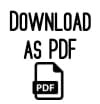The form of this autoethnographic poem, “A Blue Transhistoric,” resembles a wave: coming, going, history, hereafter. I ask that you read it from top to bottom + bottom to top – an endless exchange.
AUTHOR’S MEMO
Writing as a fluidic encounter: “I ask you to feel at your edges other edges” (Eades, 2015, p. 232).
These emergent expressions of feeling transfigured extend from Ktaqmkuk (Newfoundland, Canada). Métis scholar Zoe Todd and settler artist AM Kanngieser suggest that “place, a nonhuman being, is sentient and active. One place cannot stand in for another, as each place is formed through ongoing reciprocal relations” (2020, p. 386).
In the time that it takes to assemble this poem, on the far east coast of an island that keeps me, weather systems waft and whorl with unpredictable presence. Sleet to mist to sun to fog to heavy wind to silent evening. Mild winter holds the smell of ocean in the atmosphere. A season past, another year, the sea ice remains absent.
As rural / transsexual / body of water, I am co-constituted by temporal flows of place-based power that immerse my position within and without an unruly climate. My being in relation here is always trans-corporeal (Alaimo, 2012), and with this address, I long for justice.
The critical-creative potential of poetic inquiry fosters affective responses to ecological crisis. Employing heartful theory from the oceanic contact zone, autoethnography harbours my writing through unsettled timelines of precarious survival. Drifting at the edges of a coastal environment transformed by extraction and political collapse, my onto-epistemological perceptions swell with counter-archives of the living North Atlantic. Among them, the work of mixed Mi’kmaq/settler poet Shannon Webb-Campbell (2022), and Black trans/queer artists and writers Danielle Brathwaite-Shirley (2021) and Alexis Pauline Gumbs (2018), who explore bereavement and resurgence with sacred seaways to envision other lifespans of water-willed kinship. Together and apart: a call to imagine how co-resistant solidarity-in-difference is a necessary practice for responding to inherited legacies of dispossession and displacement (Coulthard & Betasamosake Simpson, 2016).
The form of this autoethnographic poem resembles a wave: coming, going, history, hereafter. I ask that you read it from top to bottom + bottom to top – an endless exchange.
AUTOETHNOGRAPHIC POEM: A BLUE TRANSHISTORIC
held against possessions harboured
worlds engender immutable touch
futurity foundering
deepwater distance
together w/e capture
a blue transhistoric
◡◡◡◡◡◡◡◡◡◡
relentless + wave-slow
extractive aquasexual
loveform unfathomed
become with the body
softly release these ciliated echo ends
here to wash over an interstitial heart
REFERENCES
Alaimo, S. (2012). States of Suspension: Trans-corporeality at Sea. ISLE: Interdisciplinary Studies in Literature and Environment, 19(3), 476-493. https://doi.org/10.1093/isle/iss068
Brathwaite-Shirley, D. (2021). BLACKTRANSSEA [Interactive game]. https://blacktranssea.com
Eades, Q. (2015). All the Beginnings: A Queer Autobiography of the Body. North Melbourne: Tantanoola.
Coulthard, G., & Simpson, L. B. (2016). Grounded Normativity / Place-Based Solidarity. American Quarterly, 68(2), 249-255. https://doi.org/10.1353/aq.2016.0038
Gumbs, A. P. (2018). M Archive: After the End of the World. Durham: Duke University Press.
Kanngieser, AM., & Todd, Z. (2020). From Environmental Case Study to Environmental Kin Study. History and Theory, 59(3), 385-393. https://doi.org/10.1111/hith.12166
Webb-Campbell, S. (2022). Lunar Tides. Toronto: Book*hug Press.
Featured image titled “Loveform Unfathomed” by Daze Jefferies I The AutoEthnographer










